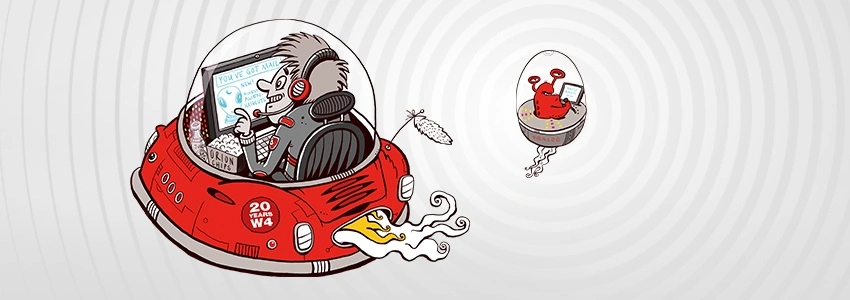Email marketing may not be new, but it remains a powerful tool for generating and managing leads, even in an age dominated by AI and automation. While these technologies have reshaped how businesses approach lead generation, email continues to deliver unmatched personalization and control. From small startups to SaaS companies and B2B enterprises, email marketing remains key to building a reliable pipeline of engaged prospects. In this guide, we’ll explore actionable tactics, automation tools, email sequences, key metrics, and best practices to help you elevate your email marketing efforts and boost ROI.
Basic Strategies for Acquiring High-Quality Email Leads
Target the Right Audience
Acquiring high-quality leads begins with understanding your audience deeply. For example, a SaaS company should tailor content for different personas, like decision-makers versus project managers. Craft lead magnets that address specific pain points—such as a technical case study for CTOs or an ROI-focused guide for marketers. Use dynamic calls-to-action (CTAs) tailored to each persona, whether offering product demos, free trials, or downloadable resources. Ensure your landing pages are designed with these personas in mind and promote your content on the channels they frequent, like LinkedIn for B2B or Instagram and YouTube for younger entrepreneurs.
Use Valuable Lead Magnets

To entice leads to share their email addresses, offer high-value lead magnets like ebooks, checklists, or free tools. These resources should provide immediate value and directly address the needs of your audience. For example, a software company might offer an in-depth guide or a free tool that showcases the product’s practical benefits. The more relevant and helpful the lead magnet, the more likely visitors are to opt in.
Optimize Opt-In Forms

Make it as easy as possible for visitors to sign up by placing email sign-up forms on high-traffic pages, such as the homepage or blog. Use pop-ups or slide-ins at moments when users are most likely to engage. Keep CTAs direct and action-oriented, such as “Get Your Free Guide” or “Subscribe Now.” This approach reduces friction and increases conversion rates by making the process simple and straightforward.
Dedicated Landing Pages
A focused, distraction-free landing page is key to improving lead capture. Design these pages to highlight one specific offer—whether it’s a lead magnet, exclusive content, or a special deal—and include a clear CTA. By removing unnecessary navigation and keeping the content highly relevant to the lead’s needs, you increase the chances of conversion.

Leverage Multiple Channels
Broaden your lead generation efforts by promoting your lead magnets and email sign-ups across various platforms. Share content on social media, YouTube, and during offline events to engage a wider audience. This multi-channel approach helps you capture leads from diverse touchpoints, ensuring you reach prospects even if they don't visit your website directly.
Techniques to Increase Email Open Rates and Effectiveness
Now that you've captured quality leads, it’s essential to boost your email performance. Here are key strategies:
Craft Engaging Subject Lines
Your subject line is the first thing your recipients see, so make it count. Use curiosity, urgency, or personalization to entice opens. For example, “Last Chance for 20% Off” or “John, Here’s Your Custom Guide” can grab attention and increase open rates.
Optimize Send Time
Testing different send times will help you determine when your audience is most likely to engage. Whether it’s mid-morning or late afternoon, finding the optimal time can lead to higher open rates.
Segment Your Audience
By segmenting your email list based on behaviors or demographics, you can send content that’s more relevant to each subscriber. This targeted approach improves engagement and increases the likelihood of conversion.
A/B Testing

Constantly test various elements of your emails—subject lines, CTAs, or content. A/B testing helps you identify what resonates best with your audience, allowing you to optimize your future campaigns.
Mobile Optimization
With over 60% of emails opened on mobile devices, ensuring your emails are mobile-friendly is crucial. Use responsive design so your emails look great on all screen sizes, making it easy for recipients to engage with your content on the go.
The Email Lead Generation Process: From Capture to Nurture

Once a lead enters your system, nurturing them towards conversion is crucial. Here's how to effectively manage the process:
1. Capture and Welcome
Send an immediate welcome email once a lead signs up. This first email should thank the subscriber, introduce your brand, and deliver the promised lead magnet. It’s your chance to make a positive first impression and set expectations for future emails.
2. Segmentation and Profiling
Segment your leads based on their interests, behavior, or demographics to tailor your messaging. Personalizing emails by targeting these segments can boost engagement, with segmented campaigns seeing up to 30% higher open rates compared to generic blasts. This ensures content resonates with each lead.
3. Lead Nurturing via Email Sequences
Develop a series of follow-up emails that provide ongoing value and guide leads towards the next step—whether that’s making a purchase, booking a demo, or requesting more information. This series should be designed to build trust and gradually push leads down the sales funnel.
Lead Nurturing via Email Sequences
Develop a series of follow-up emails that provide ongoing value and guide leads towards the next step—whether that’s making a purchase, booking a demo, or requesting more information. This series should be designed to build trust and gradually push leads down the sales funnel.
4. Automation
Leverage marketing automation tools to ensure timely delivery of these emails without manual intervention. Automated workflows allow you to send the right message at the right moment, saving time while maintaining consistent engagement with leads.
5. Monitoring and Handoff
Track lead engagement to identify when a lead is “sales-ready.” Once a lead meets predefined criteria—such as clicking on a demo request or engaging with multiple emails—pass them to the sales team for further follow-up. Monitoring ensures that no lead falls through the cracks.
6. Conversion and Beyond
After a lead converts into a customer, keep nurturing them with post-conversion emails. Encourage repeat business, gather feedback, and ask for referrals. These follow-ups help strengthen customer relationships and increase lifetime value by ensuring satisfaction and loyalty.
7. Legal Considerations
Remember that throughout the lead generation process, compliance with legal regulations like GDPR (EU), CAN-SPAM (USA), and others is essential. Always obtain explicit consent from leads before sending marketing emails, include clear opt-out options, and protect personal data.
Using Automation Tools in Email Lead Generation

Email automation tools are a game-changer when it comes to nurturing leads at scale. They allow you to stay connected with prospects without constantly managing every interaction. Here’s how automation can transform your email strategy:
You can set up autoresponders and drip campaigns to automate follow-up emails based on specific triggers. For example, when someone signs up, they instantly receive a welcome email, or if there’s a product update, they get notified automatically. This keeps the communication flowing smoothly without any manual effort.
Integrating these tools with your CRM platforms like HubSpot or Salesforce makes everything more streamlined. It helps manage your leads while syncing valuable customer data, so your emails are always relevant. Whether it’s follow-ups or targeted promotions, the integration keeps things organized.
Segmentation and personalization at scale are powerful with automation. By analyzing your leads' behavior, you can send them content tailored specifically to their interests or stage in the buying journey. So, whether they clicked a link or opened an email, your next message will feel personal and timely.
Behavioral triggers are a great way to send emails when users engage in specific actions. If they download a free resource or click on a product page, an email is automatically sent to keep them engaged. It’s all about giving them what they need, when they need it.
But it doesn’t stop with email. Multi-channel integration ensures your email efforts work seamlessly with other marketing channels like ads or phone calls. A unified strategy helps keep the lead engaged, whether they’re interacting with your website, social media, or your emails.
Lastly, analytics and optimization are crucial. With the right tools, you can track how well your emails are performing and adjust campaigns accordingly. A/B testing, open rates, click-through rates—these insights will help you tweak your strategy for even better results.
Common Email Sequences for Lead Generation
Effective lead generation hinges on nurturing relationships with your audience. One of the most powerful ways to do this is through well-designed email sequences. Here are some of the most common ones used by businesses to convert leads into loyal customers:
Welcome Series

A Welcome Series is your first opportunity to connect with new subscribers and make a lasting impression. Typically consisting of 2-4 emails, this sequence introduces your brand, sets expectations, and delivers immediate value. The first email should offer a warm welcome and thank the subscriber, while also giving them access to any promised lead magnets, such as a free ebook or guide.
The subsequent emails might further educate the lead on your company’s mission and provide additional resources. By giving immediate value, you build trust and lay the groundwork for a deeper relationship, encouraging the lead to engage further with your content or offerings.
Lead-Magnet Follow-Up

Once a lead downloads a resource like an ebook or checklist, you want to keep the engagement going. This sequence ensures the lead doesn’t drop off by continuing the conversation around the initial download. After thanking the lead for the download, the next emails should offer related content, dive deeper into the topic, or explain how your product or service can help them solve a specific problem. By keeping the conversation alive and positioning your brand as a helpful resource, you help build trust and keep your leads warm.
Trial-to-Paid Sequence (For SaaS Companies)

For SaaS companies, turning free trial users into paying customers is crucial. This sequence helps to nurture users throughout the trial period by highlighting key features, providing tips for getting the most out of the product, and offering success stories that demonstrate its value. As the trial nears its end, it’s important to include special offers or discounts to incentivize conversion. By showcasing the full potential of your product and creating a sense of urgency, you increase the likelihood of turning trial users into loyal, paying customers.
Webinar or Event Follow-Up

After a webinar or event, follow-up emails are essential for converting engagement into leads. Begin by thanking attendees for joining, and include key takeaways or a link to the event recording. Offering additional resources, such as case studies or exclusive offers, helps attendees retain value from the event and keeps the relationship alive. These follow-up emails reinforce your expertise and encourage attendees to take the next step, whether it’s booking a demo, signing up for your service, or exploring more of your content.
Re-engagement Sequence

For subscribers who have become inactive, a re-engagement sequence is a great way to reignite interest. These emails typically start with a friendly “we miss you” message and offer an incentive to return, such as a discount, exclusive content, or a personalized note. The goal is to rekindle interest in your brand and remind subscribers of the value you offer. Re-engagement emails are a low-pressure way to reignite interest and clean up your email list by weeding out unengaged subscribers.
Why Email Marketing Outperforms Social Media for Lead Generation
When compared to other sources of lead generation, email marketing often delivers stronger results, especially in terms of conversions. Unlike social media, which relies on broad, algorithm-driven reach, email marketing targets individuals who have opted in, ensuring your messages land in a more receptive inbox.
Engagement is another area where email outperforms social media. Emails typically see higher open rates and click-through rates because recipients have shown interest by subscribing. In contrast, social media engagement is often lower, especially without the support of paid ads, and content can get lost quickly in crowded feeds.
Email marketing also has a significant advantage when it comes to conversions. With the ability to control the message and personalize content, emails guide leads more effectively down the sales funnel. Social media, while great for brand awareness, tends to have lower conversion rates, as content is more public and fleeting.
In terms of lifespan, email has the edge. Once an email lands in an inbox, it can be read and revisited at the recipient's convenience, whereas social media content is short-lived and easily buried.
Ultimately, while social media is excellent for engaging a broad audience, email marketing excels in nurturing leads and converting them into customers.
Maximizing Your Email Lead Generation with HubSpot: A Proven Solution
In conclusion, email lead generation is an indispensable part of building a successful marketing strategy. The right tools can elevate your campaigns, and HubSpot stands out as one of the most powerful platforms for email marketing and lead management. With HubSpot’s intuitive suite of tools, businesses can capture leads through customized forms and landing pages, seamlessly integrate these leads into the HubSpot CRM, and gain complete visibility into their customer journey.
HubSpot’s email automation features make nurturing leads simple—set up workflows to send everything from welcome emails to automated drip campaigns. With advanced segmentation and personalization options, you can tailor messages based on user behavior, ensuring your emails resonate with each individual. HubSpot also provides real-time analytics, enabling you to monitor key metrics and continuously optimize your campaigns for higher engagement and better performance.
As a HubSpot Diamond Partner, W4 is equipped with the expertise and experience to help you fully harness HubSpot’s capabilities. We specialize in implementing HubSpot's tools to maximize conversions and streamline your email lead generation efforts. Whether you’re a small business looking to scale or a large enterprise seeking to refine your marketing strategy, partnering with W4 ensures that you leverage HubSpot to its fullest potential, driving sustainable growth and long-term success.









